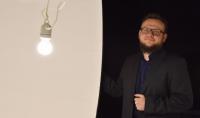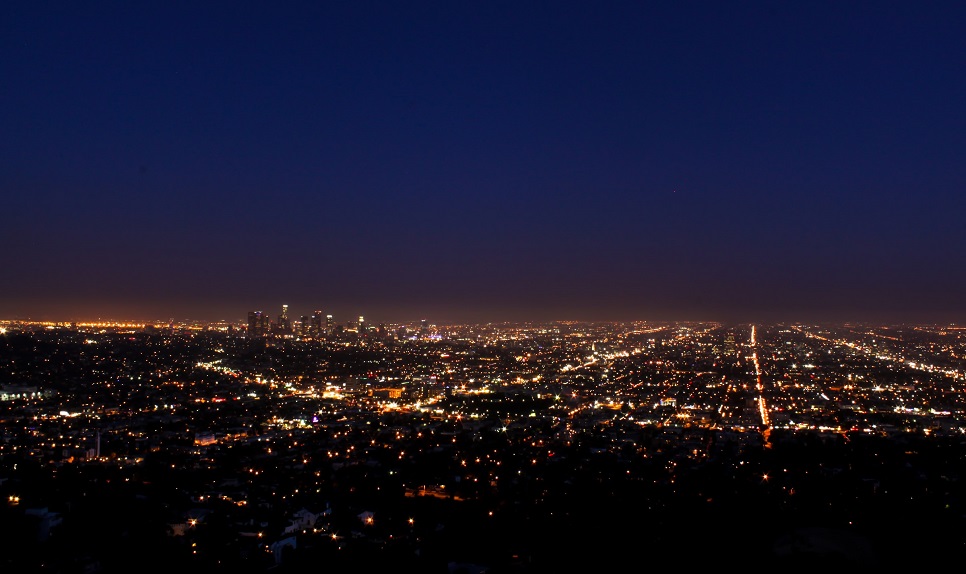Brightness, I see brightness! About the problem of light pollution
It does not give off unpleasant odours, it does not cause problems with recycling, it does not remain in gazebos and landfills — and yet light can be and actually is a source of pollution. We asked Krzysztof Skarżyński, PhD Eng., from the Lighting Technology Division of Electrical Power Engineering Institute at the Faculty of Electrical Engineering, a lighting enthusiast, a specialist in the field of its simulation and measurements.
With the progress of civilization, cities began to grow, and also — glow. Awareness of the negative consequences of attempts to cope with night darkness is growing, but still seems insufficient.
What is light pollution?
This phenomenon consists in introducing into the Earth's atmosphere a large amount of electromagnetic radiation from the visible range. This radiation comes from all artificial applications — road lighting installations, illumination of architectural objects, lighting of stadiums, billboards, and even... greenhouses. Its source is also the light that we use in our homes, and that comes out of the windows.
Implications for nature (and beyond)
It is an interdisciplinary problem, and therefore there are a number of consequences. Light pollution certainly has a major impact on humans and other animal species, but also on plants — and this is often a negative impact. We know, for example, that excessive night light affects the bat population, some species of birds that are not used to such conditions and cannot find their way back to their habitats. As a result, they are depopulated. The same is true of insects. If one species is missing, another, which was somehow associated with it, must adapt to ensure its survival. However, this is an evolutionary change and animals are often unable to adapt to new conditions quickly enough.
Light pollution can also determine the phenomenon of glare, i.e. the type of disturbance of vision and reception of the surrounding space. This is extremely important for the safety of both road and pedestrian traffic. The issue of light intrusion is also associated with light pollution. Light from exterior lighting systems can penetrate through windows into living spaces to illuminate the interior. This often ends up with the irritation of the residents, and in a worse scenario — the sleep disorders they experience.
Lighting at night, however, determines our comfort of staying in a given place and a sense of security. It also affects the aesthetics and popularity of specific places, as in the case of beautiful illuminations of architecture. Therefore, despite some negative consequences, we cannot give up the use of electric lighting at night.
Skyglow over the city
The brightening of the night sky is also the result of light pollution. The skyglow is created not only by light directed towards the sky, but also by reflection from various objects. Skyglow, effective as it is, can be quite a challenge in astronomical observation. The sky should be as dark as possible. We can see celestial bodies with a certain brightness — some objects that glow less, cease to be visible in a place where light pollution is large. Some of them can only be seen from a specific place. If the brightness of the night sky rises there, we lose the ability to perform tests and analyzes. The scale of the problem is well illustrated by a map of light pollution, which shows how it shapes around the globe.
Counteracting
The phenomenon of light pollution can only be eliminated when we do not use electrical lighting at night at all. This is impossible and not recommended — primarily due to our comfort and safety reasons. However, light pollution can be very much limited. Therefore, from the perspective of an engineer, it is crucial to ensure that lighting systems generate pollution only in a minimal way.
When designing, you have to ask yourself: is lighting in this place really needed? Illumination of places that are completely excluded from traffic is certainly not recommended. Of course, when designing and implementing the lighting system, you should follow good design practices developed over the years and meet the criteria set out in the relevant lighting standards. You should also use high-quality lighting equipment that is dedicated to a given task, so as to be sure that we only illuminate what is needed.
It is also important to avoid x-rays and to plan the rational operation of the lighting system. The lighting maintenance system directly affects its oversizing and the use of a given installation. If the design assumes cleaning the luminaires every 2-3 years, then it must actually be done to ensure the intended operation of the installation. Success therefore consists of both the designer's thought and the care of the end user. A great solution is to use control systems and adjust the lighting to the traffic volume. In the evenings and at night, traffic in certain places freezes, so the installation should be adapted to these conditions (dimming, use of motion sensors, etc.). In Warsaw or Olsztyn, there are systems that switch off installations or reduce the intensity of lighting. Control systems can be expensive. However, after some time, the investment costs pay back due to the reduction of electricity consumption.
It is also worth considering the use of light sources with lower color temperatures. This is due to the phenomenon of Reyleigh scattering, which means that light with shorter wavelengths is much more scattered in the Earth's atmosphere. Therefore, this problem mainly concerns LED lighting installations. These light sources have a very characteristic spectral distribution of radiation, where a large part of the energy is transmitted on waves in the range from 380 nm to 500 nm (i.e. the one that is more diffuse). The higher the color temperature closest, the more energy is contained in the indicated wavelength range. Thus, in addition to undoubted advantages such as higher light efficiency, ease of care, usually lower electricity consumption, LED lighting also has disadvantages and may adversely affect the environment. Some European countries have already made it compulsory to use the nearest low colour temperatures (below 3000 K) in outdoor lighting.
In the light of the law
Currently, there are no formal requirements in Poland to prevent light pollution (or they are only at an early stage of implementation), and research related to the verification of the project in terms of light pollution is usually not carried out. However, some countries, e.g. Taiwan and South Korea have introduced legal regulations that provide for the possibility of imposing financial penalties on owners of lighting systems that contribute to excessive light pollution.
The question is whether we should go the same way or find another way to fight this problem. There are organizations and research units, such as the Lighting Technology Division of the WUT, which can be contacted with a request for help, e.g. to carry out an expert opinion. However, redesigning or rebuilding the installation is very often difficult or even impossible. Therefore, it is worth taking care to implement sustainable outdoor lighting solutions at the beginning, which are characterized by high energy efficiency and only to a minimal extent determine light pollution.










